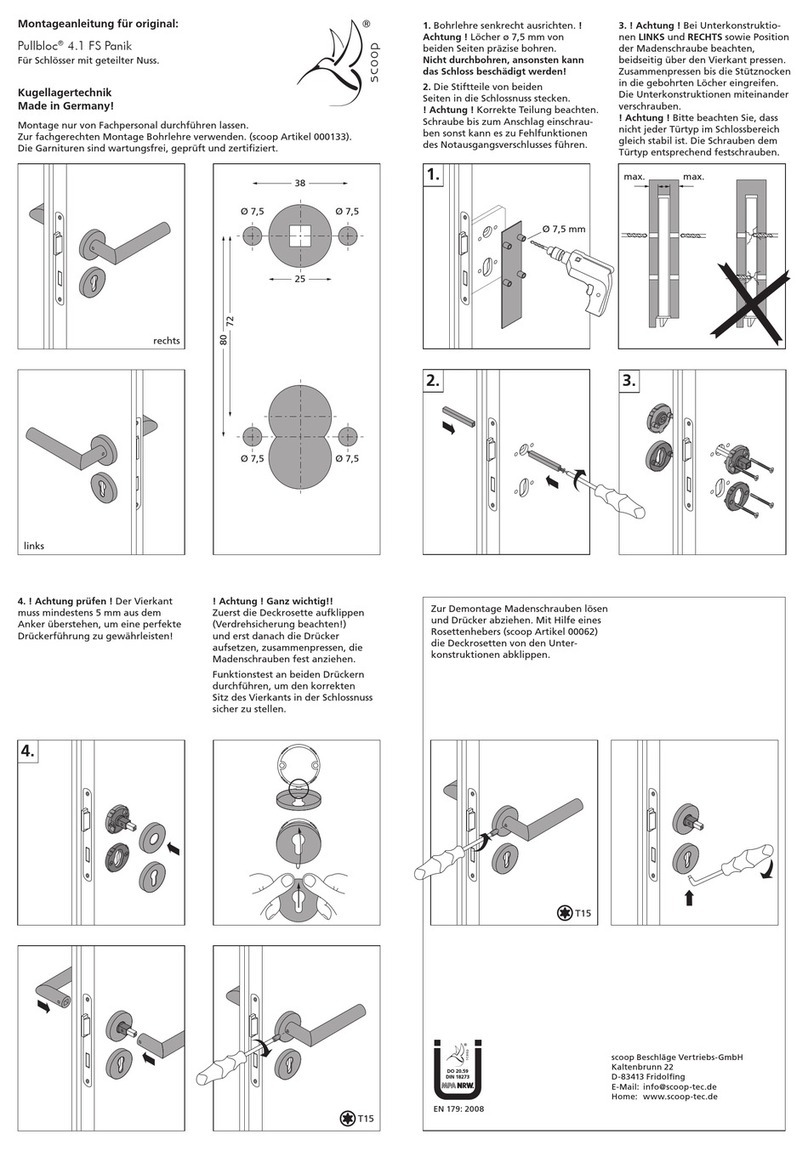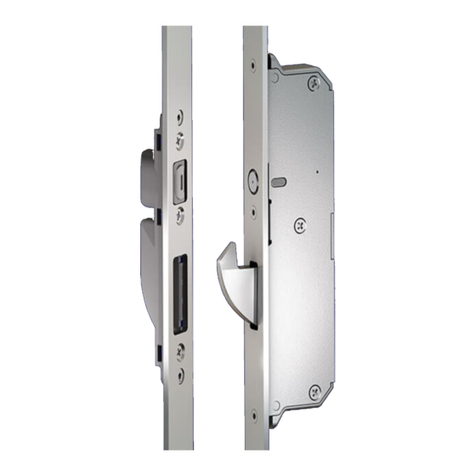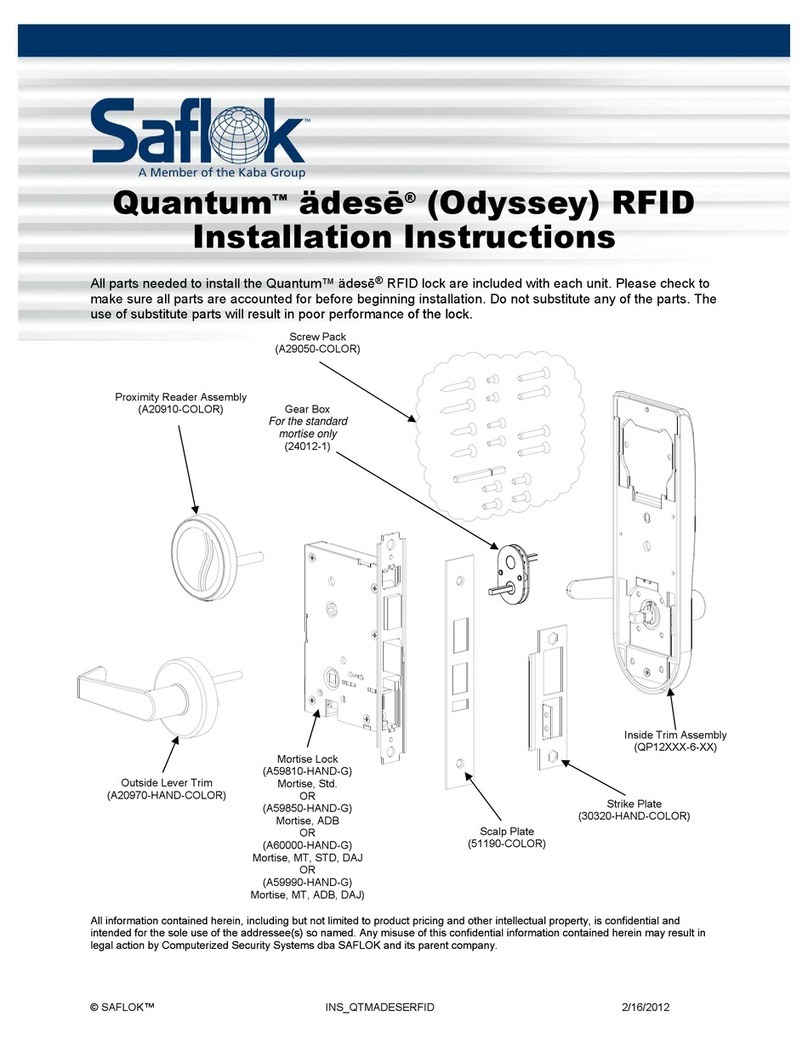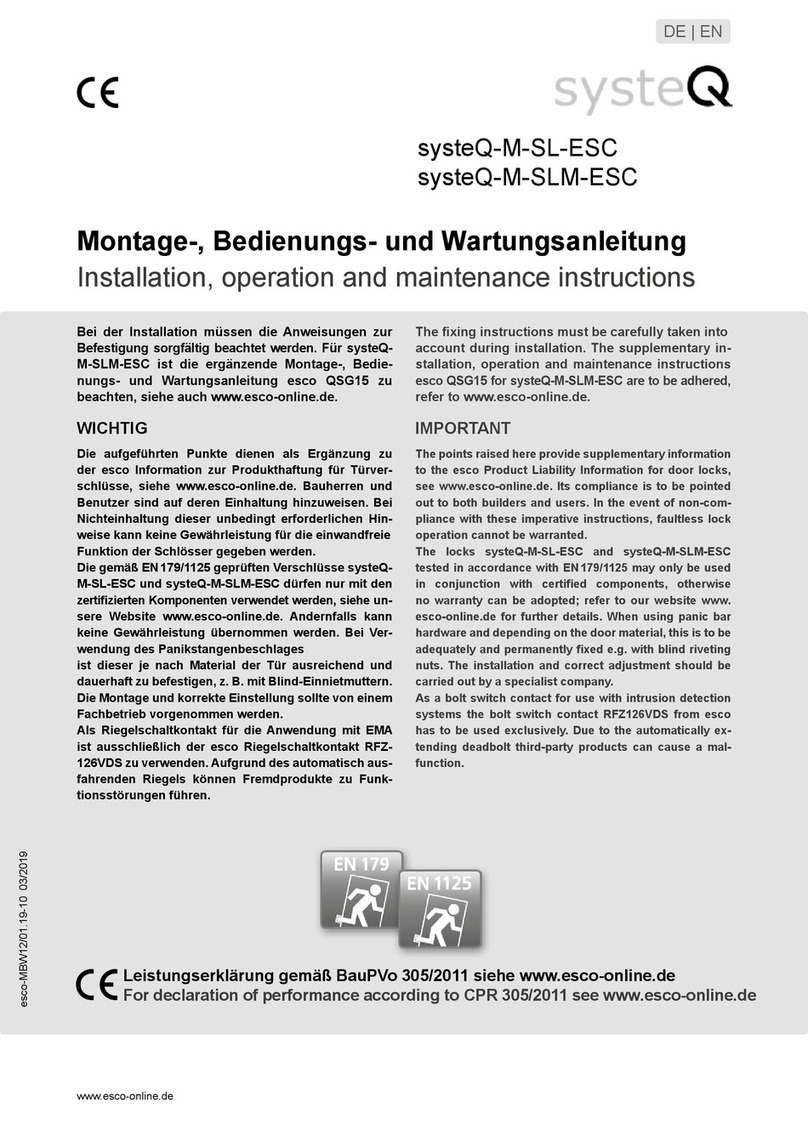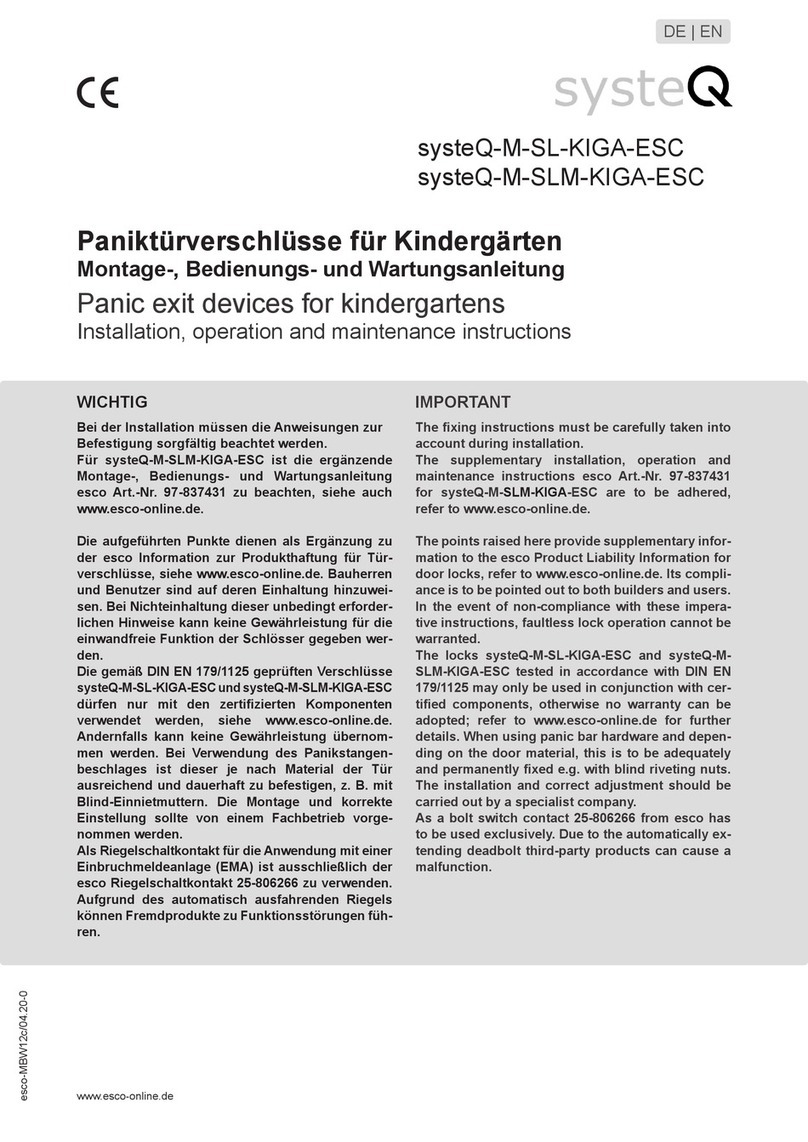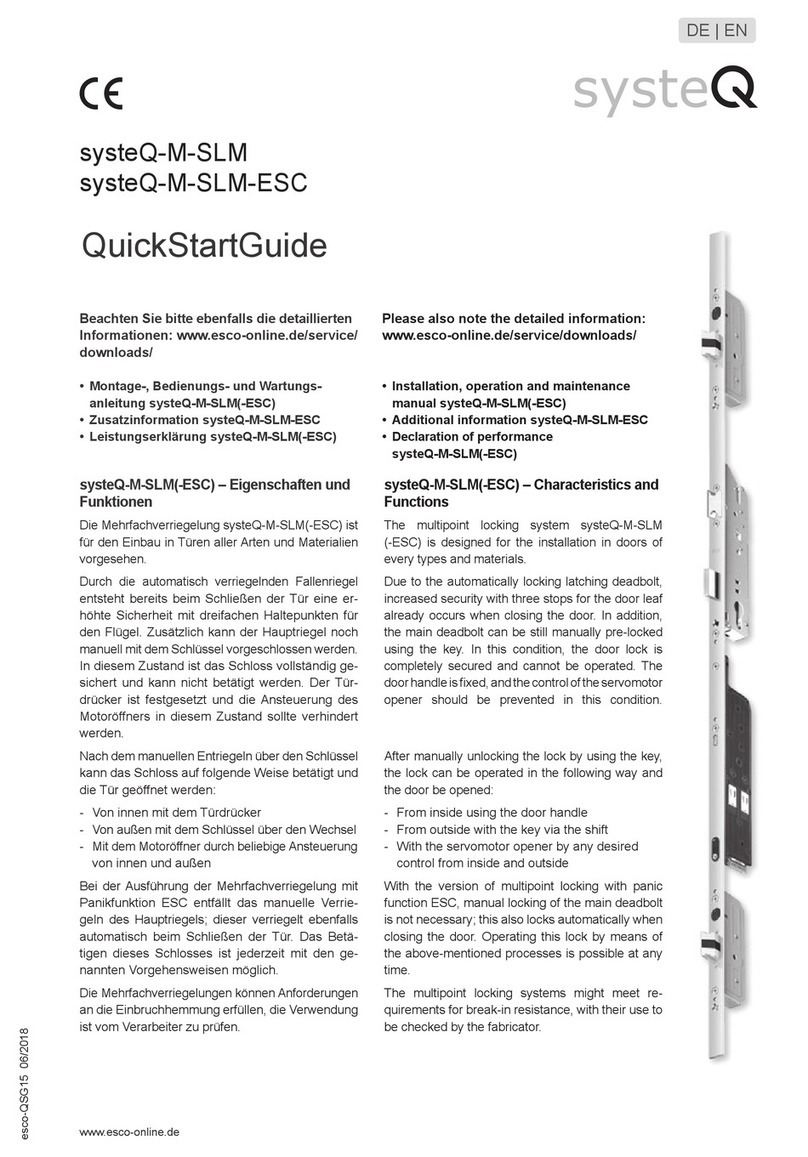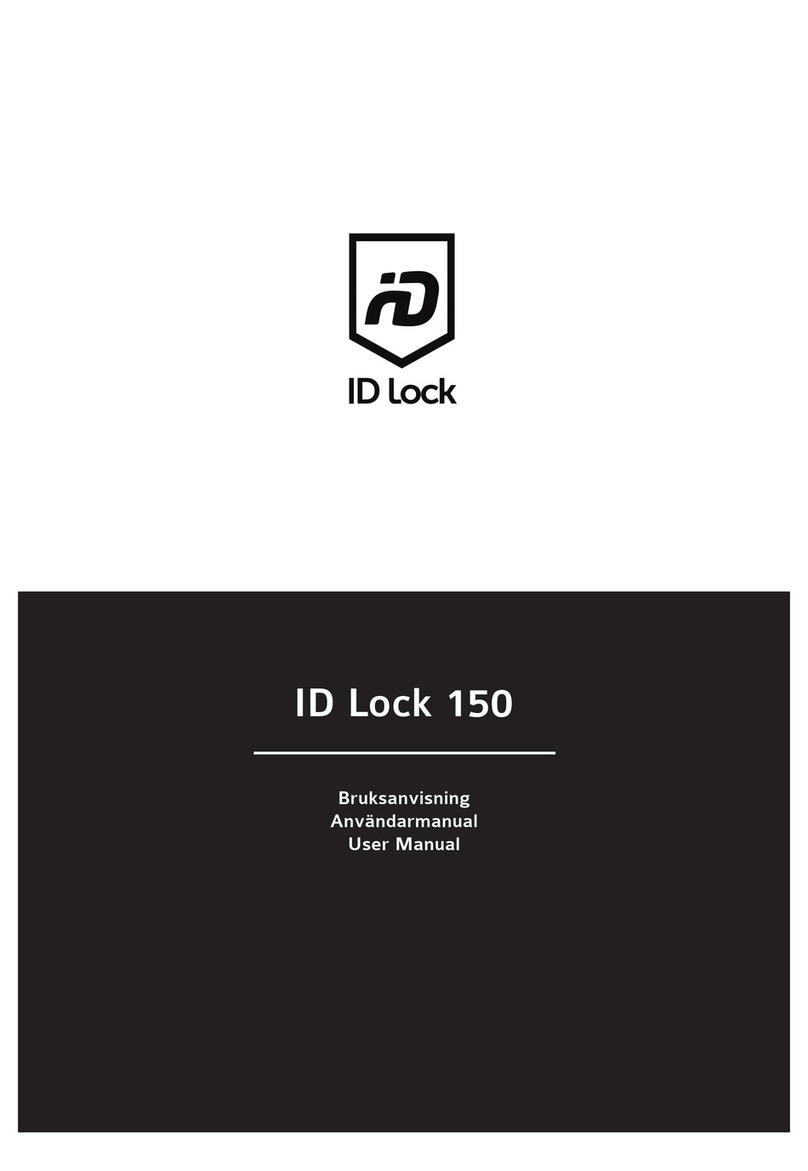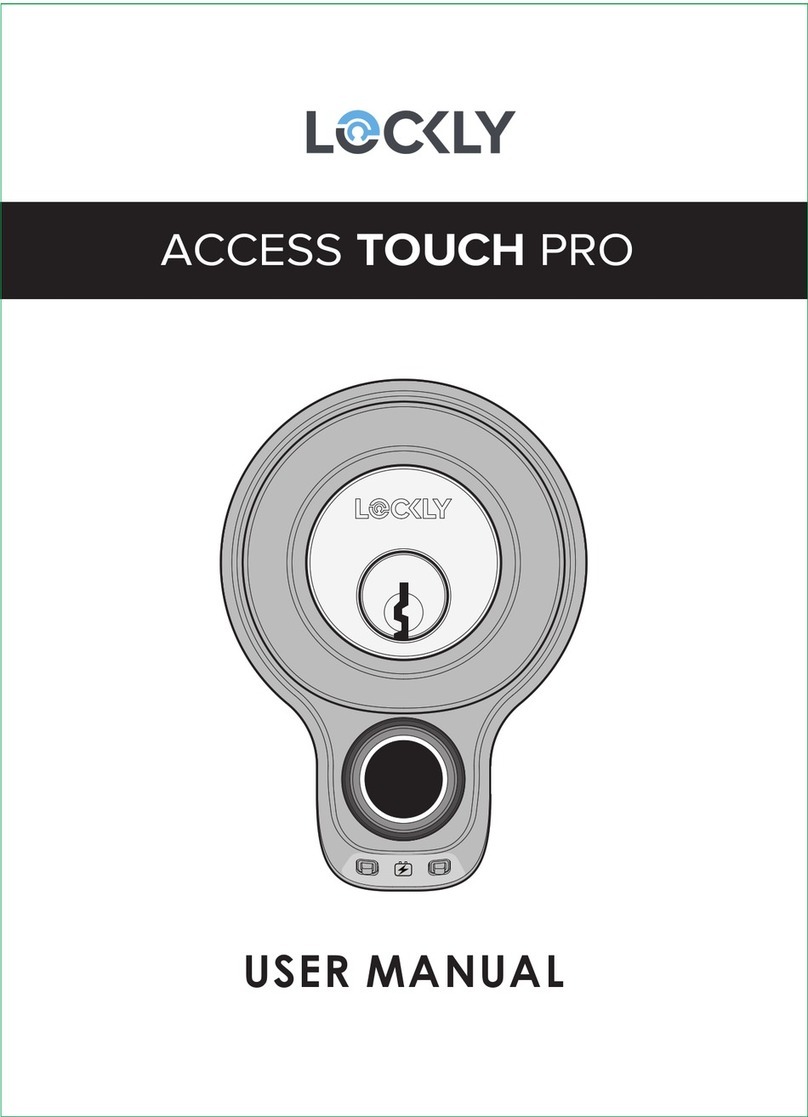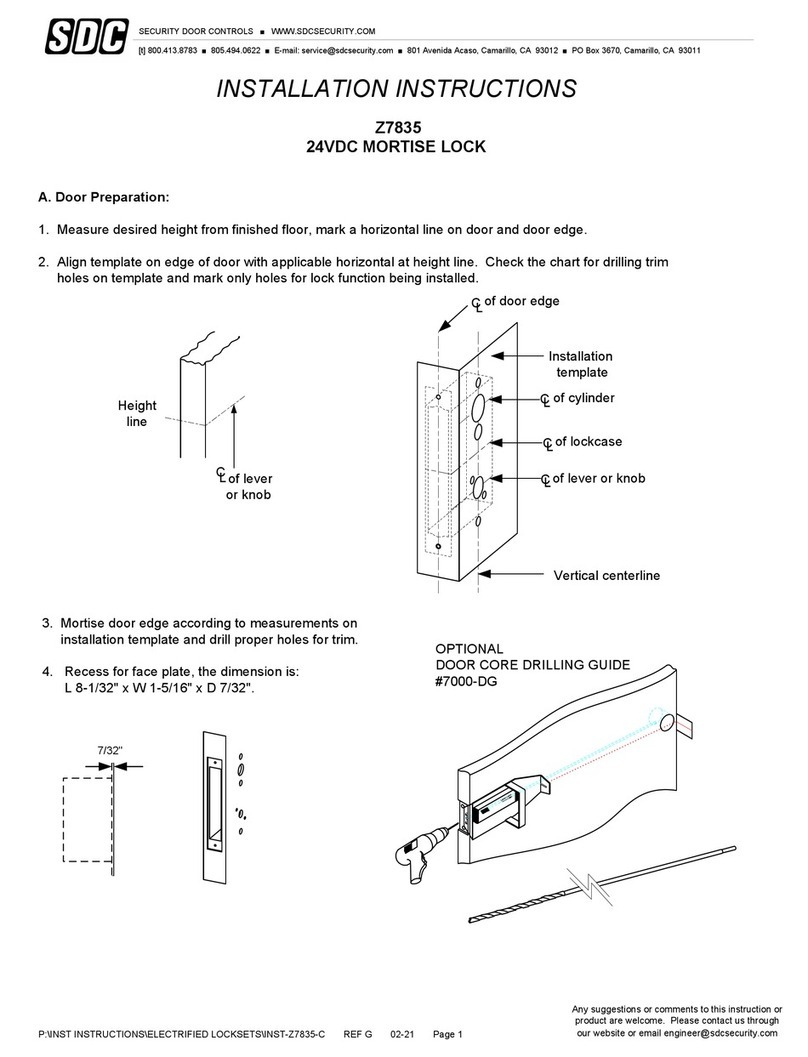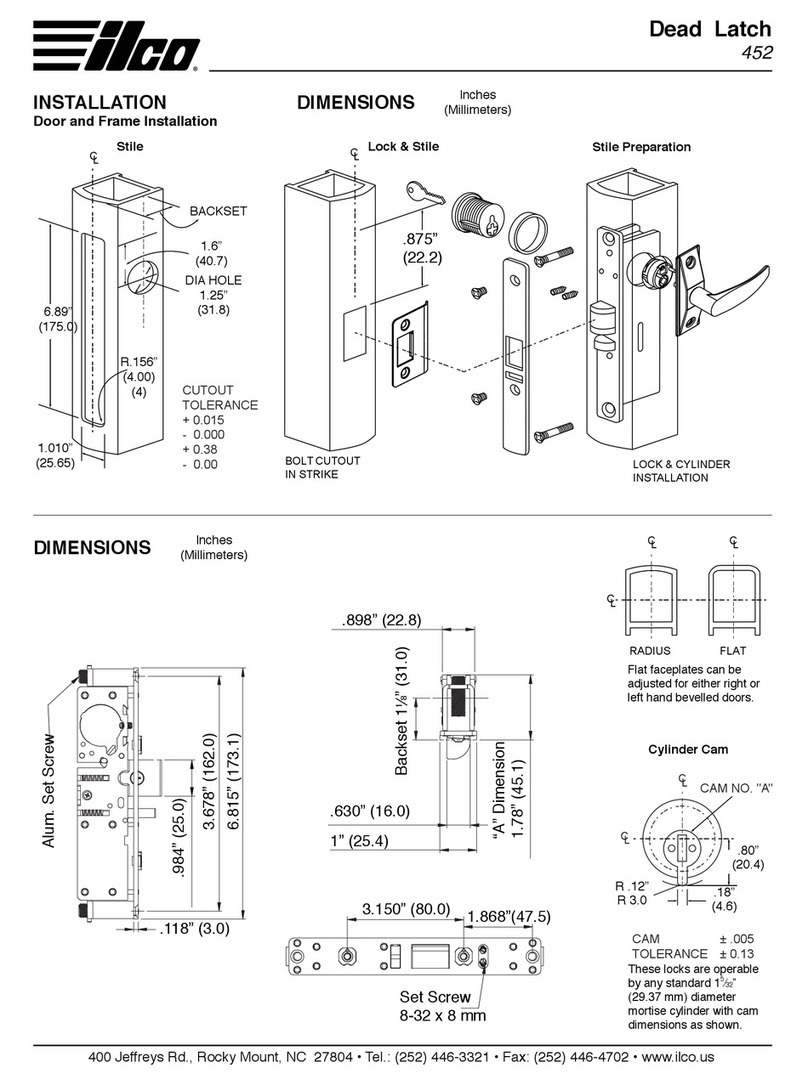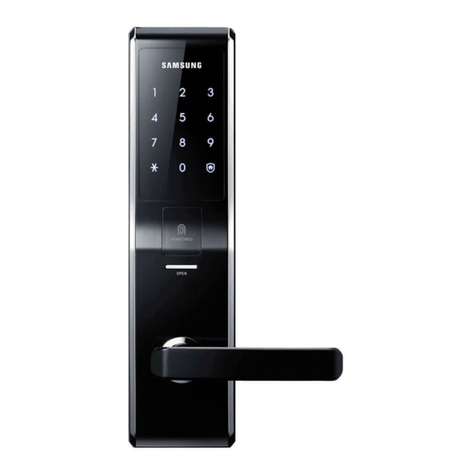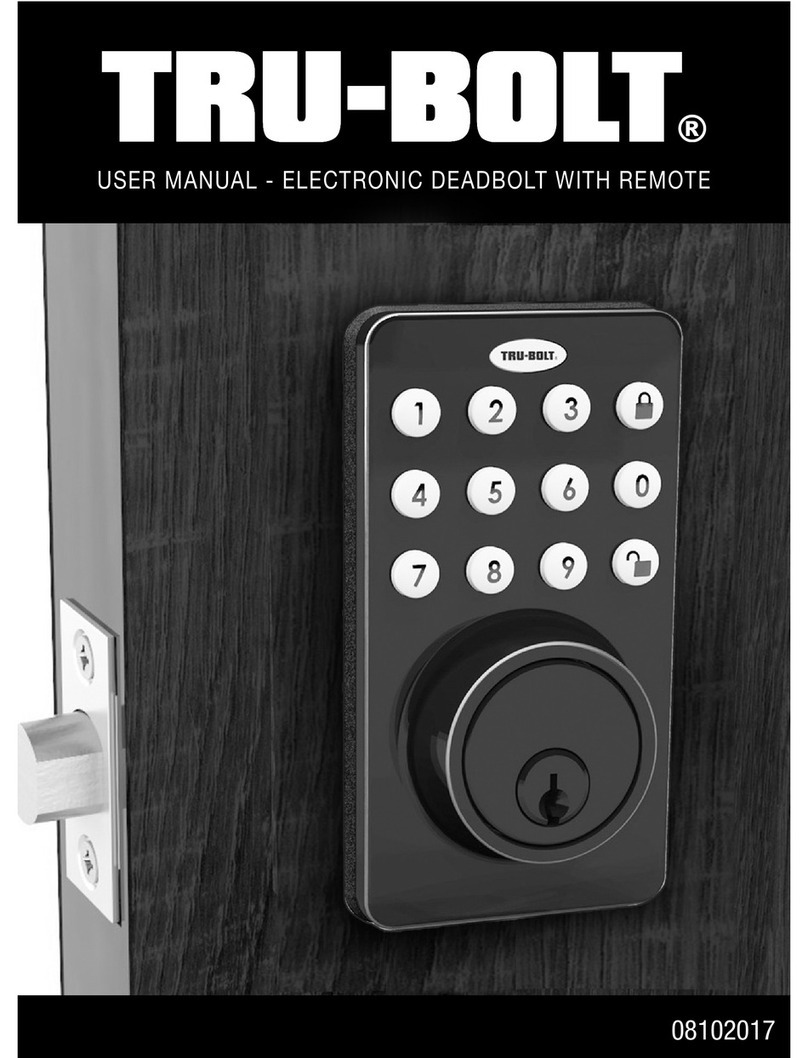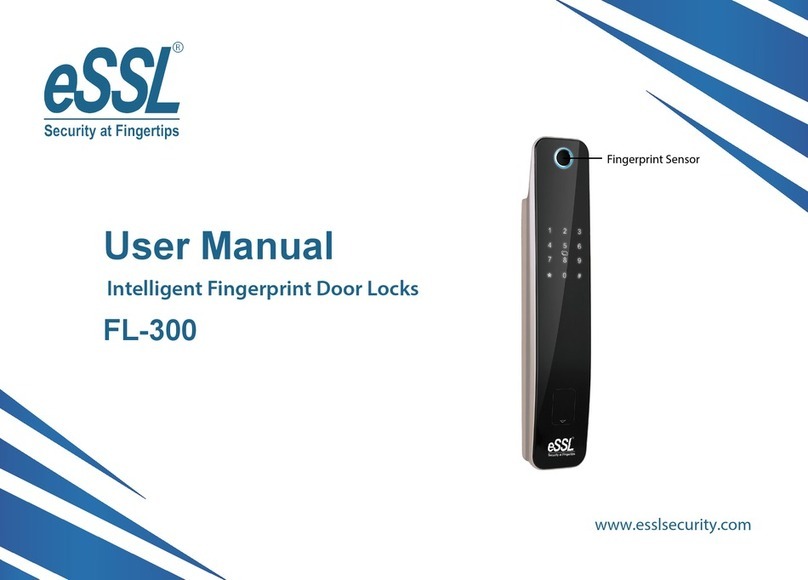
9
www.esco-online.de
systeQ-M-SLH-ESC
systeQ-M-SLH-M-ESC
systeQ-M-SL-ESC
systeQ-M-SLM-ESC
• Bei evtl. Schwergängigkeit einer Funktion nach Montage
des Schlosses niemals gewaltsam vorgehen! Stattdessen
ist die Ursache zu ergründen und abzustellen.
• Beim Transport der Türen – auch bei verriegeltem Schloss –
den Flügel vor Verschiebungen schützen.
• Bei Verwendung einer Panik-Gristange oder einer
Druckstange muss deren Drehbewegung auf die der
Schlossnuss abgestimmt sein, jedoch min. 30° bei dem
Gangügel und min. 40° bei dem Standügel.
• Die Befestigung von Panik- bzw. Notausgangsverschlüssen
kann je nach Türmaterial unterschiedlich sein. Zur zuver-
lässigen Befestigung der Panikstangen und Drücker soll-
ten Durchgangsschrauben verwendet werden.
• Falls ein Türschließer installiert wird, sollte beachtet werden,
dass hierdurch die Betätigung der Tür durch Kinder, Behin-
derte und ältere Personen nicht unnötig erschwert wird.
• Falls die zu befestigenden Panik- / Notausgangsverschlüsse
an zweiügeligen Türen mit überfälztem Mittelanschlag
und Türschließern vorgesehen sind, sollte ein Schließ-
folgeregler nach EN 1158 installiert werden, um die rich-
tige Schließfolge der Tür sicherzustellen (erforderlich bei
Feuerschutz- / Rauchschutztüren).
• Vor der Installation an Feuerschutz-/Rauchschutztüren ist
sicherzustellen, dass dieser Fluchttürverschluss für diese
spezielle Tür geeignet ist.
• Sollten die Fluchttürverschlüsse an verglasten Türen an-
gebracht werden, ist darauf zu achten, dass die Glasteile
aus Sicherheitsglas oder Verbundsicherheitsglas bestehen.
• Panik- / Notausgangsverschlüsse sind nicht für den Ein-
satz an Pendeltüren geeignet.
• Die Panik-Gristange oder der Drücker sollten üblicher-
weise in einer Höhe zwischen 900 mm und 1100 mm über
der Oberäche des fertigen Fußbodens bei geschlosse-
ner Tür installiert werden. Falls bekannt ist, dass die
Mehrheit der Benutzer des Gebäudes kleine Kinder sind,
sollte eine Reduzierung der Höhe der Stange in Betracht
gezogen werden (siehe systeQ Kindergartenlösung unter
www.esco-online.de).
• Bei Paniktürverschlüssen sollte die Panik-Gristange so
installiert werden, dass eine größtmögliche wirksame
Stangenlänge erreicht wird.
• Bei der Installation von Notausgangsverschlüssen mit
Drückerbetätigung, insbesondere an Türen mit abgestuf-
ten Oberächen, sollten jegliche möglichen Sicherheits-
risiken, z. B. Einklemmen von Fingern oder Verfangen von
Kleidung, so weit wie möglich vermieden werden.
• An der Innenseite von Fluchttüren sollte
ein Piktogramm mit einem Önungshin-
weis angebracht werden.
• Never resort to violent measures in the event of arduous
operation after installing the lock! Instead nd out the
reason and x it.
• When transporting doors – also when the lock is locked –
protect the door leaf against permanent dislocation.
• When using a panic push bar or a touch bar, its rotary
motion must be lined up with the spindle receiver hole
but min. 30° rotary motion at the active leaf and min. 40°
rotary motion at the passive leaf.
• The xing of panic and/or emergency exit locks can dier
depending on the door material. In order to mount panic
bars and lever handles reliably, through bolts should be
use.
• If a door closer is installed, one should take into account
that children, disabled persons and elderly people opera-
ting the door are not unnecessarily hindered.
• If panic / emergency exit locks are to be xed on double-
leafed doors with rebated centre mullion and door closers,
an operating sequence control device in accordance with
EN 1158 should be installed in order to warrant the correct
operating sequence the door (necessary on re protec-
tion/ smoke protection doors).
• Before installing a re protection / smoke protection door,
ensure that the emergency exit door lock is suitable for
that particular door.
• If the emergency exit door locks are to be mounted on
glazed doors, care must be taken to ensure that the glass
parts are safety glass or laminated safety glass.
• Panic / emergency exit locks are not suitable for use on
swing doors.
• Panic push bars or lever handles are usually installed
at a height of between 900 mm and 1100 mm above the
surface of the nished oor (with the door closed). If it
is known that the majority of the users in a building are
small children, a reduction of the height the bar should be
considered (see systeQ kindergarden solution on www.
esco-online.de).
• On panic exit hardware the panic push bar should be in-
stalled in order to achieve the most eective rod length.
• Upon installing emergency exit locks with lever handle
operation (particularly on doors with stepped surfaces),
any possible safety hazards (e.g. trapped ngers or
clothes) should be avoided as far as possible.
• A pictogram with opening information should
be attached to the inside of exit doors.
DE | EN

